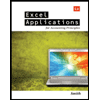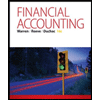
1.
Prepare
1.
Explanation of Solution
Bonds: Bonds are long-term promissory notes that are represented by a company while borrowing money from investors to raise fund for financing the operations.
Bonds Payable: Bonds payable are referred to long-term debts of the business, issued to various lenders known as bondholders, generally in multiples of $1,000 per bond, to raise fund for financing the operations.
Premium on bonds payable: It occurs when the bonds are issued at a high price than the face value.
Prepare journal entry for cash proceeds from the issuance of the bonds on July 1, 20Y1.
| Date | Account Title and Explanation | Post Ref | Debit ($) | Credit ($) | |||
| 20Y1 | Cash | 73,100,469 | |||||
| July | 1 | Premium on Bonds Payable (1) | 8,100,469 | ||||
| Bonds Payable | 65,000,000 | ||||||
| (To record issue of bonds at premium) | |||||||
Table (1)
- Cash is an asset and it is increased. So, debit it by $73,100,469.
- Premium on Bonds Payable is an adjunct liability account and it is increased. So, credit it by $8,100,469.
- Bonds payable is a liability and it is increased. So, credit it by $65,000,000.
Working note (1):
Calculate premium on bonds payable.
2. a.
Prepare journal entry to record first semiannual interest payment and amortization of bond premium on December 31, 20Y1.
2. a.
Explanation of Solution
Prepare journal entry for first semiannual interest payment and amortization of premium on bonds.
| Date | Account Title and Explanation | Post Ref | Debit ($) | Credit ($) | |||
| 20Y1 | Interest Expense (4) | 3,494,977 | |||||
| December | 31 | Premium on Bonds Payable (2) | 405,023 | ||||
| Cash (3) | 3,900,000 | ||||||
| (To record first semiannual payment of interest on bonds) | |||||||
Table (2)
- Interest expense is an expense and it decreases the equity value. So, debit it by $3,494,977.
- Premium on Bonds Payable is an adjunct liability account and it is decreased. So, debit it by $405,023.
- Cash is an asset and it is decreased. So, credit it by $3,900,000.
Working note (2):
Calculate premium on bonds payable semiannually.
Working note (3):
Calculate the amount of cash paid.
Working note (4):
Calculate the interest expense on the bond.
2. b.
Prepare journal entry to record second interest payment and amortization of bond discount on June 30, 20Y2.
2. b.
Explanation of Solution
Prepare journal entry for second interest payment and amortization of discount on bonds.
| Date | Account Title and Explanation | Post Ref | Debit ($) | Credit ($) | |||
| 20Y2 | Interest Expense (4) | 3,494,977 | |||||
| June | 30 | Premium on Bonds Payable (2) | 405,023 | ||||
| Cash (3) | 3,900,000 | ||||||
| (To record second semiannual payment of interest on bonds) | |||||||
Table (3)
- Interest expense is an expense and it decreases the equity value. So, debit it by $3,494,977.
- Premium on Bonds Payable is an adjunct liability account and it is decreased. So, debit it by $405,023.
- Cash is an asset and it is decreased. So, credit it by $3,900,000.
3.
Determine the amount of total interest expense for 20Y1.
3.
Explanation of Solution
Determine the amount of total interest expense for 20Y1.
Hence, the amount of total interest expense for 20Y1 is $3,494,977.
4.
Explain the situation when contract rate of bond is greater than the market rate of interest.
4.
Answer to Problem 2PB
Yes, the bond proceeds will always be greater than the face amount of bonds when the contract interest rate is greater than the market interest rate.
Explanation of Solution
If the stated interest rate of a bond is greater than the market interest rate, then the bonds is issued at premium. This is because the bonds is more valuable in market and investors is ready to pay more than the maturity
5.
Calculate the amount of cash proceeds (present value) from the sale of the bonds using present value tables.
5.
Explanation of Solution
Determine the amount of cash proceeds (present value) from the sale of the bonds.
Step 1: Calculate the semiannual interest on bonds.
Step 2: Calculate the present value of interest.
| Particulars | Amount |
| Interest payment (a) | $3,900,000 |
| PV annuity factor at semiannual market interest rate of 5% for 20 periods (b) | 12.46221 |
| Present value | $48,602,619 |
Table (4)
Note: Refer Appendix A in the text book for present value annuity factor.
Step 3: Calculate the present value of lump sum payment of $65,000,000 (principal amount) at 5% for 20 periods.
| Particulars | Amount |
| Single payment (a) | $65,000,000 |
| PV factor of $1 at semiannual market interest rate of 5% for 20 periods (b) | 0.37689 |
| Present value | $24,497,850 |
Table (5)
Note: Refer Appendix A in the text book for present value of $1 factor.
Step 4: Calculate the amount of cash proceeds from the sale of the bonds.
Thus, the amount of cash proceeds from the sale of the bonds is $73,100,469.
Want to see more full solutions like this?
Chapter 11 Solutions
FINANCIAL&MANAGERIAL ACCOUNTING(LL)W/AC
- Question 1arrow_forwardHorngren's Financial & Managerial Accounting: The Managerial Chapters, 8th Edition. Lily-Mae makes handheld calculators in two models: basic and professional. Lily-Mae estimated $812,500 of manufacturing overhead and 625,000 machine hours for the year. The basic model actually consumed 250,000 machine hours, and the professional model consumed 375,000 machine hours.Compute the predetermined overhead allocation rate using machine hours (MHr) as the allocation base. How much overhead is allocated to the basic model? To the professional model? Basic $325,000arrow_forward3. A corporation's working capital is calculated using which amounts? Total Assets And Total Liabilities Total Assets And Current Liabilities Current Assets And Current Liabilitiesarrow_forward
- The changes that occurred during a recent year in the accounts Retained Earnings and Treasury Stock will be presented in which financial statement? Balance Sheet Income Statement Statement Of Cash Flows Statement Of Comprehensive Income Statement Of Stockholders' Equityarrow_forwardThe amount spent for capital expenditures will be reported in which section of the statement of cash flows? Cash Provided/used In Financing Activities Cash Provided/used In Investing Activities Cash Provided/used In Operating Activities Supplemental Informationarrow_forwardWhich of the following will appear as a negative amount on a statement of cash flows that was prepared using the indirect method? A Decrease In Inventory An Increase In Accounts Payable An Increase In Accounts Receivable Depreciation Expensearrow_forward
- Which of the following will appear as a positive amount on a statement of cash flows that was prepared using the indirect method? An Increase In Accounts Receivable An Increase In Inventory A Decrease In Accounts Payable Depreciation Expensearrow_forwardWhat is usually presented first in the notes to the financial statements? Accumulated Other Comprehensive Income Commitments And Contingencies Significant Accounting Policiesarrow_forwardWhich is the annual report to the SEC that contains the financial statements of a publicly-traded corporation? Form 1040 Form 10-K Form 10-Q Schedule Carrow_forward
 Excel Applications for Accounting PrinciplesAccountingISBN:9781111581565Author:Gaylord N. SmithPublisher:Cengage Learning
Excel Applications for Accounting PrinciplesAccountingISBN:9781111581565Author:Gaylord N. SmithPublisher:Cengage Learning College Accounting, Chapters 1-27AccountingISBN:9781337794756Author:HEINTZ, James A.Publisher:Cengage Learning,Principles of Accounting Volume 1AccountingISBN:9781947172685Author:OpenStaxPublisher:OpenStax College
College Accounting, Chapters 1-27AccountingISBN:9781337794756Author:HEINTZ, James A.Publisher:Cengage Learning,Principles of Accounting Volume 1AccountingISBN:9781947172685Author:OpenStaxPublisher:OpenStax College Financial AccountingAccountingISBN:9781305088436Author:Carl Warren, Jim Reeve, Jonathan DuchacPublisher:Cengage Learning
Financial AccountingAccountingISBN:9781305088436Author:Carl Warren, Jim Reeve, Jonathan DuchacPublisher:Cengage Learning Cornerstones of Financial AccountingAccountingISBN:9781337690881Author:Jay Rich, Jeff JonesPublisher:Cengage Learning
Cornerstones of Financial AccountingAccountingISBN:9781337690881Author:Jay Rich, Jeff JonesPublisher:Cengage Learning




